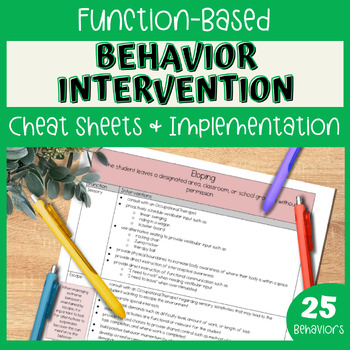
In my classroom and in my role as an autism & low-incidence disability coach, few days go by when I am not trying to decipher student behavior. After working with hundreds of students and thousands of educational professionals, I have developed a 5-step system for behavioral intervention that has worked really well. In today's post, I will walk you through each step to help you with solving problem behaviors that may be impacting student success in your classroom. ...

My first few years of teaching I used communication notebooks in my elementary special education classroom.... and I HATED them. For those who are not familiar, a communication notebook is a notebook passed between home and school to communicate between families and school staff. It sounds good in theory, but in my experience it was not. Why did I hate these darn notebooks so much?! they were time-consuming... and the absolute worst time of the day to add something that is time-consuming is during pack up and dismissal. It is chaos enough as it is! they were ignored... every teacher knows which notebooks, binders, folders, etc. are checked every night and which ones are not. Which essentially means you have just wasted your time writing in the notebook. they were negative... written communication about student behavior can be easily misunderstood and can lead to defensiveness which is not an effective way to foster a parent-teacher relationship they leave out the stude......

Download my FREE Being a Good Friend Social Story and Choices Sorting Mat! I look forward to connecting with you and sharing SpEd Spot tips and FREEBIES! Download the Social Story Built with ConvertKit As I have shared before, in the special education classroom student behaviors often stem from a deficit in social skills. If we only reactively address the behavior, then it will be hard to see lasting improvement. However, proactively addressing behavior concerns with social skills direct instruction can make a huge difference! Problem Scenario Circle or Carpet Time is often a time of the day when we see an increase in unexpected behaviors. Not only can students struggle with their own on task behaviors, but they can also have difficulty juggling social expectations as well. Circle Time Social Skills Direct Instruction When teaching social skills (or any new skill really) I tend to follow the same sequence of steps: 1. Teach: First, I teach the expected skill. Using ......

Download my FREE Being a Good Friend Social Story and Choices Sorting Mat! I look forward to connecting with you and sharing SpEd Spot tips and FREEBIES! Download the Social Story Built with ConvertKit As I have shared before, in the special education classroom student behaviors often stem from a deficit in social skills. If we only reactively address the behavior, then it will be hard to see lasting improvement. However, proactively addressing behavior concerns with social skills direct instruction can make a huge difference! Problem Scenario Group work times are often a time of the day when we see an increase in unexpected behaviors. Not only can students struggle with their own on task behaviors, but they can also have difficulty juggling social expectations as well. Work Time Social Skills Direct Instruction When teaching social skills (or any new skill really) I tend to follow the same sequence of steps: 1. Teach: First, I teach the expected skill. Using a ......
Subscribe to:
Posts (Atom)






